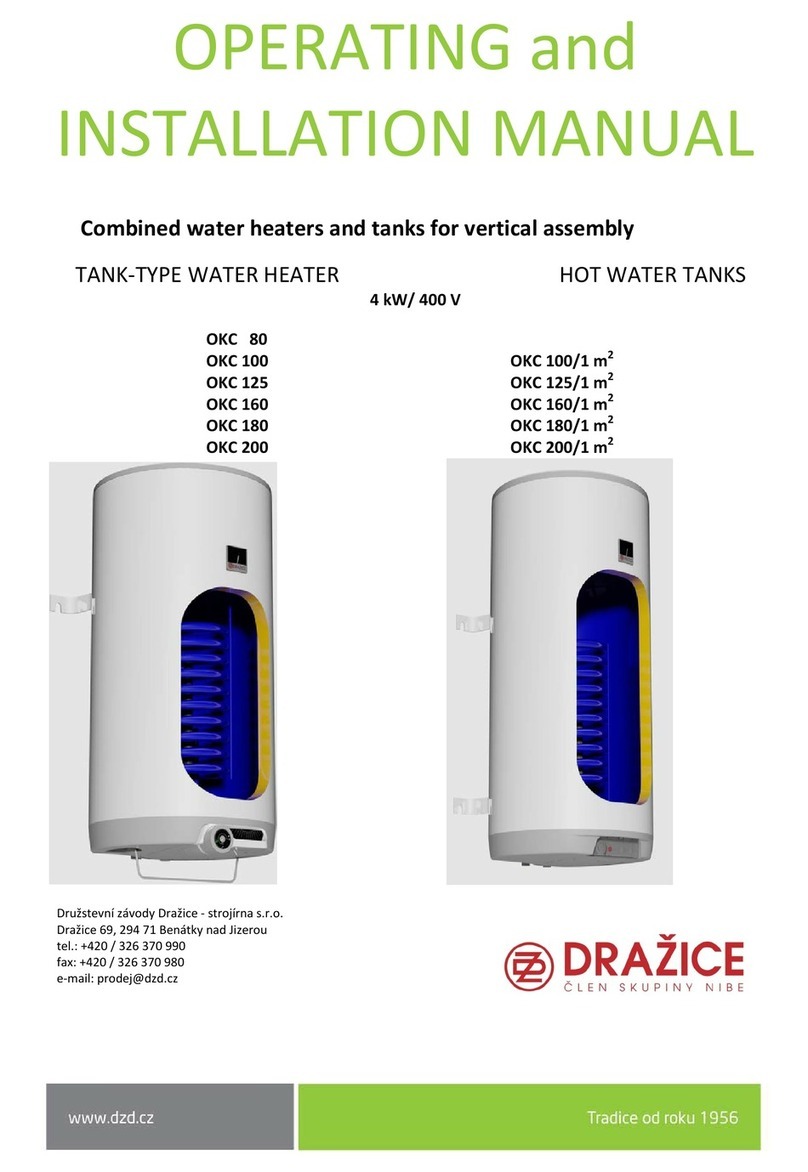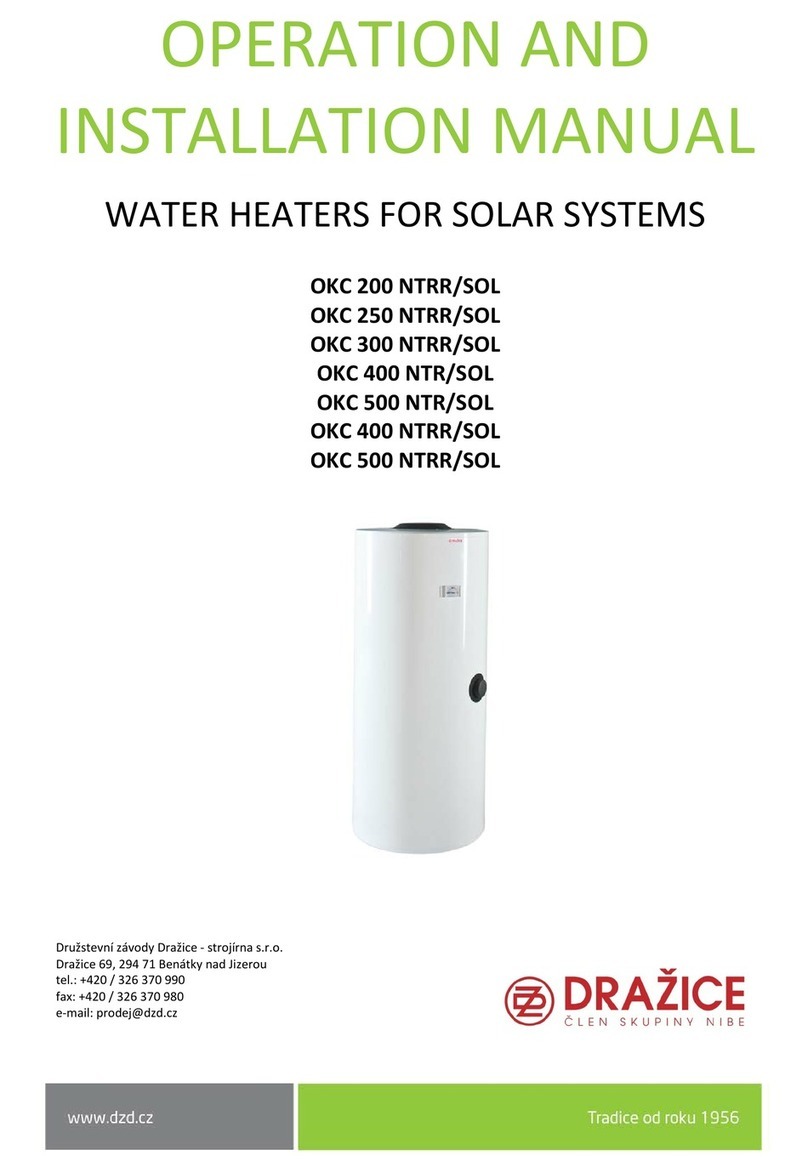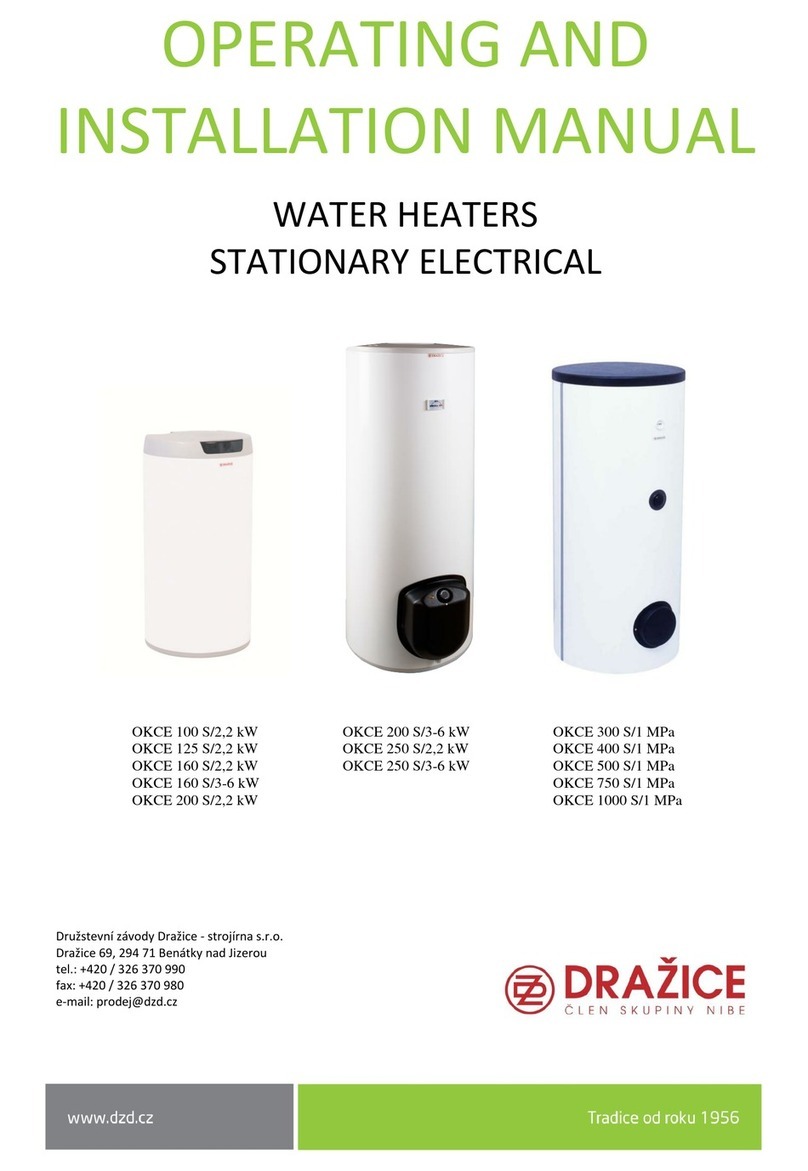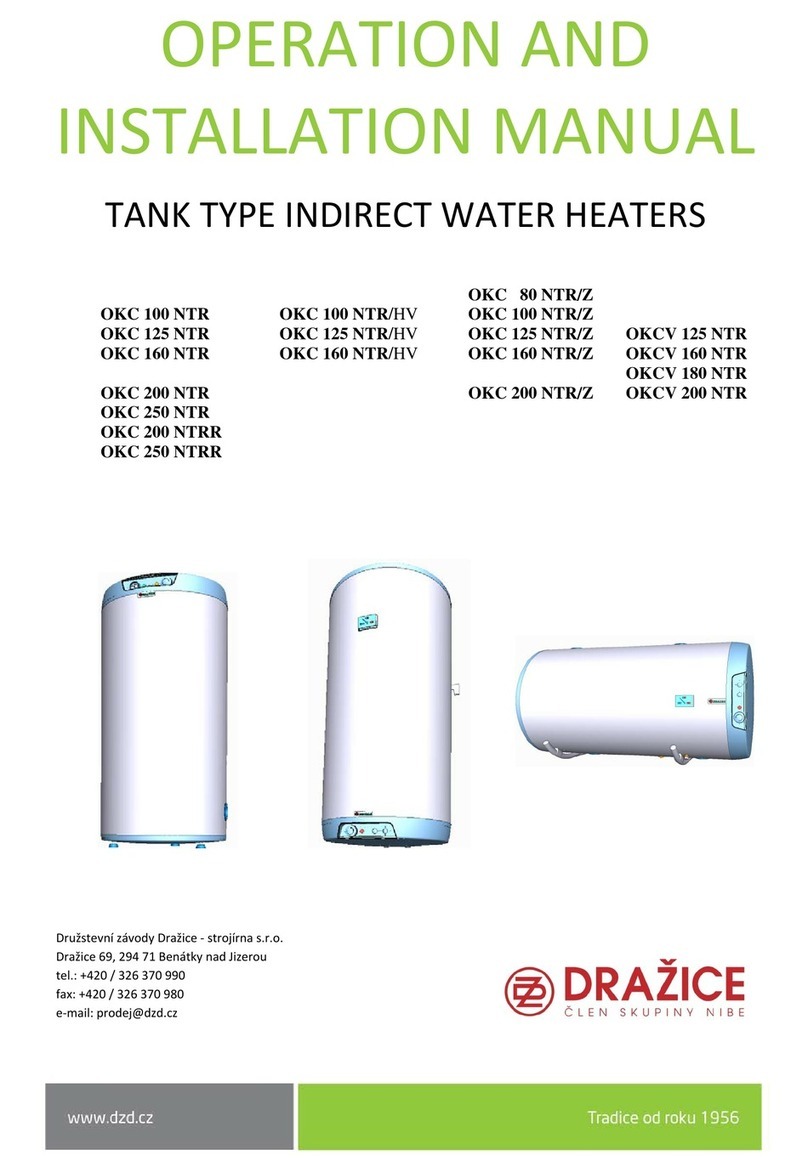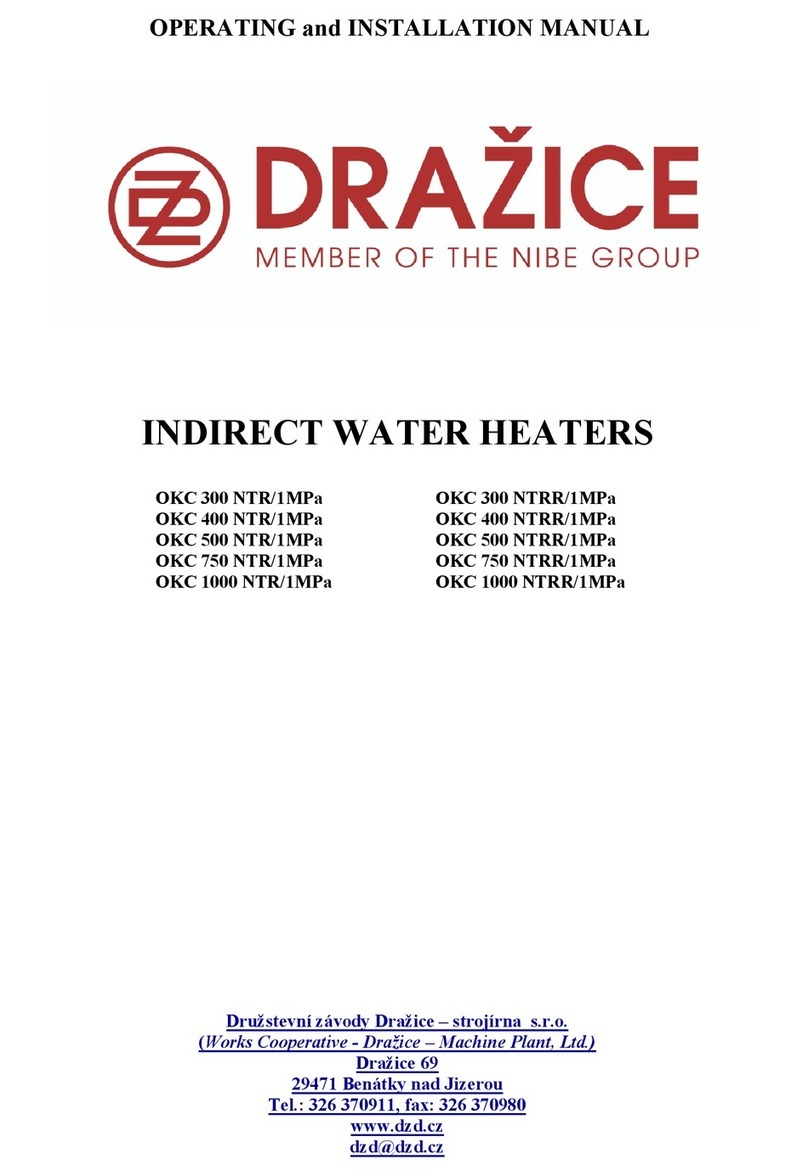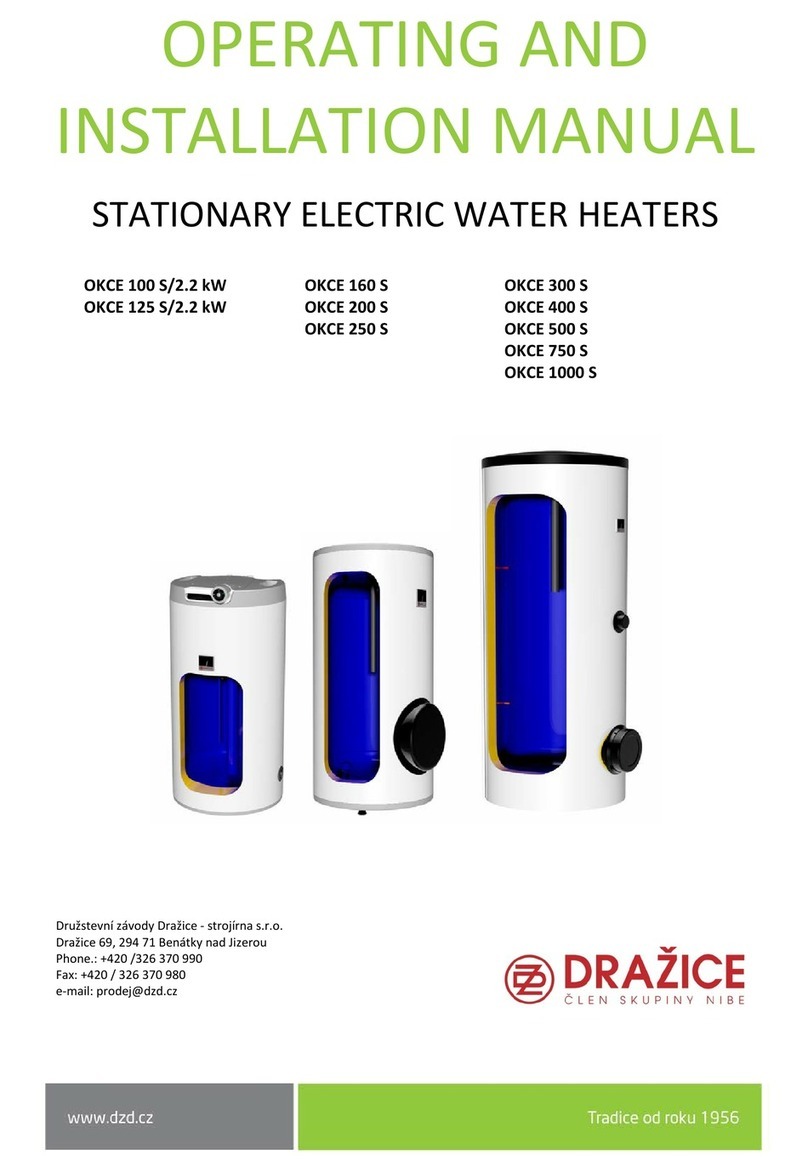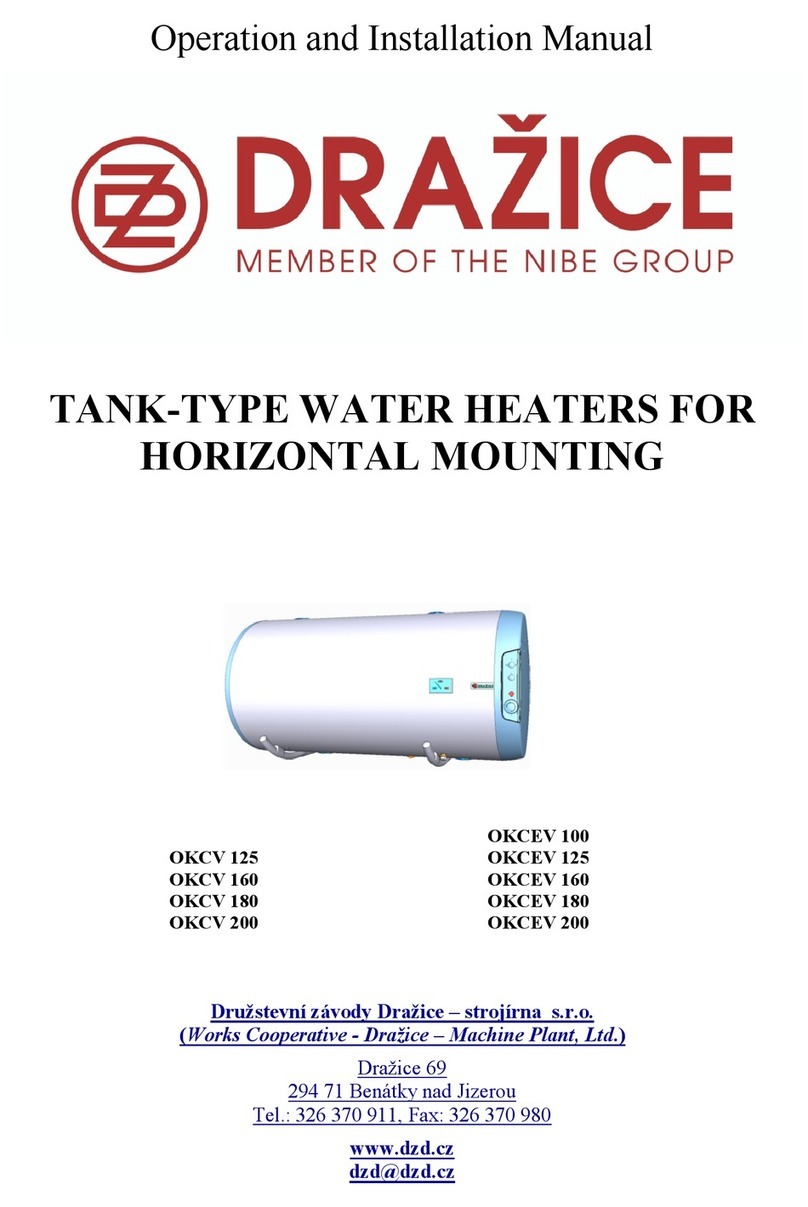
3
2. PRODUCT DESCRIPTION
The heater tank is welded from a steel sheet; the exchangers from a steel tube and, as a unit, it is entirely coated
with hot water resistant enamel. A flange is welded onto the upper bottom of the receptacle with a flange lid
screwed to it. A sealing ring is inserted between the flange lid and the flange.
Thermowells for placing a heating element and sensors of regulation thermostat and safety fuse are located
in the flange lid. Electric wiring is placed underneath the plastic removable cover. The temperature of water can be
set using the thermostat.
For additional corrosion protection a magnesium anode is mounted in the upper part of the heater to adjust the
electric potential inside the tank, reducing the risk of corrosion. The heaters have outlets of hot and cold water and
a circulation opening welded to them. The tank is insulated with polyurethane foam of 40 - 65 mm thickness. The
heater shell consists of a steel, powder-paint coated, sheet; the connecting parts are metal coated. The entire heater
stands on three rectification screws with a possibility of levelling floor unevenness within the range of 10 mm. The
heater is to be placed on the ground. The tank is tested with pressure of 0.9 MPa, heat exchangers with 1.5 MPa.
The NTR version has a heat exchanger located in the bottom part of the heater, and one heating water source is
used for heating.
Placement and environment type
The heater is placed on the ground, next to the heating water source, or in its vicinity. All connecting distributions
must be properly insulated from heat. It is recommended to use the product in an indoor environment with air
temperatures from +2 to 45°C and a maximum relative humidity of 80%.
3. IMPORTANT NOTICES
-Without a proof issued by a professional company about performed electrical and plumbing fixture the
warranty shall be void.
-The Mg anode has to be checked regularly and exchanged, if needed.
-No stop valves can be put between the heater and the safety valve.
-All outlets of hot water must be equipped with a combination faucet.
-Before the first filling of water heater it is recommended to tighten the nuts of the flange joint of the tank.
-It is not allowed to handle the thermostat, aside from temperature resetting with a control button.
-All electric installation handling, setting, and regulation feature exchange, may only be implemented by a service
company.
-The thermal fuse must not be turned off! In case of a thermostat defect, the thermal fuse interrupts electric
power supply to the heating element if the water temperature in the heater exceeds 95°C.
-As an exception, the thermal fuse may also switch off due to water overheating caused by overheating the hot
water heating system boiler (in case of a combined heater).
-We recommend you operate the heater with one type of energy. In case a solar system is connected to the
bottom exchanger, it is necessary to connect a TJ 6/4" line element in the coupling above the heater for potential
additional heating.
4. OPERATING ACTIVITY
a) Water heating by electric energy
After the heater is connected to electric network, the heating element starts heating water. The element is turned on
and off by a thermostat. After reaching the temperature set, the thermostat switches off the electric circuit and thus
discontinues water heating. The control light signals if the element is in operation (light is on) or if it is off (the light goes out).
In case of longer operation without using the heated volume, the thermostat has to be set to position 5°C to 8°C (set the
“snowflake” symbol on the thermostat selector) to avoid its freezing, or electricity supply to the heater has to be switched off.
In combined versions, the stop valve on the inlet to the exchanger has to be closed, which prevents heating water in
the hot water heating system.

